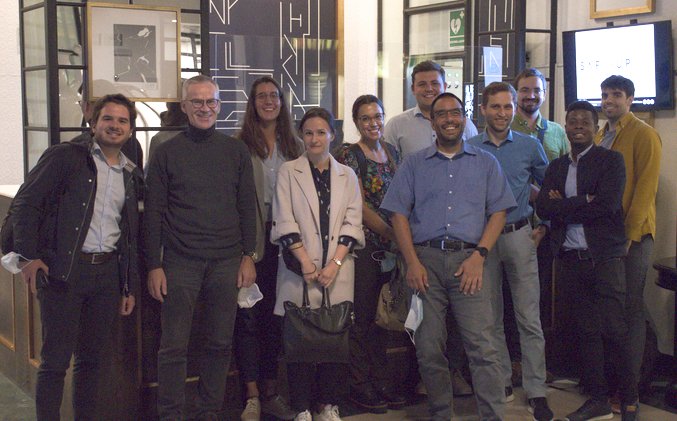The SAFE-UP team meet in Barcelona to present behavioural simulation models
Two weeks ago, Barcelona provided a fitting setting for the first face-to-face meeting of SAFE-UP, after almost a year and a half since the project kick-off!
The 2-day meeting gathered the minds behind SAFE-UP's behavioural simulation models to present their functioning, boundary conditions and how they will be validated. The autonomous vehicle model was presented by Applus+ IDIADA, and TNO showcased its human-driven vehicle model.
Shifting the focus to Vulnerable Road Users, IKA presented the work done on the pedestrian and cyclists’ models, while UNIFI did the same for the powered two-wheelers. The discussion was followed by the identification of use case scenarios, and their integration in the AIMSUN Next platform.
During the second day, the participants had a fruitful discussion on the identification of critical events during and after simulation. As well as the developers of the models, members from Technische Hochschule Ingolstadt, Bax & Company, Chalmers University of Technology, AUDI (CARIAD), Delft University of Technology and ZF also took part.
The motivation behind this discussion is that in simulation (like in reality), it’s hard to observe safety-critical events, compared to the total driven mileage. That’s why it is so important to define their causes and how they can be replicated in simulation.
How does AV driving differ from human driving?
What kind of unexpected events can AVs create in traffic?
How do human drivers react to such events? Which kind of driver failures/mishaps can the models recreate?
How do models react to unexpected events?
How can we set up the simulation to force more “rare events”?
These are the kinds of questions that the participants touched upon, with very interesting results and outputs that will be fed into the upcoming project deliverables.
Without a doubt, it was a pleasant and productive gathering, and all the participants agreed that more events of this kind need to happen in the future, both to reinforce the good relationships among the consortium, and to work together more effectively in solving challenges.



